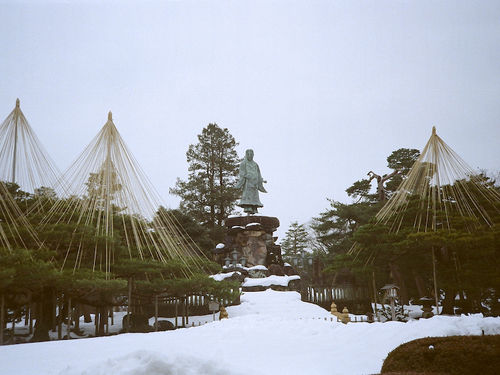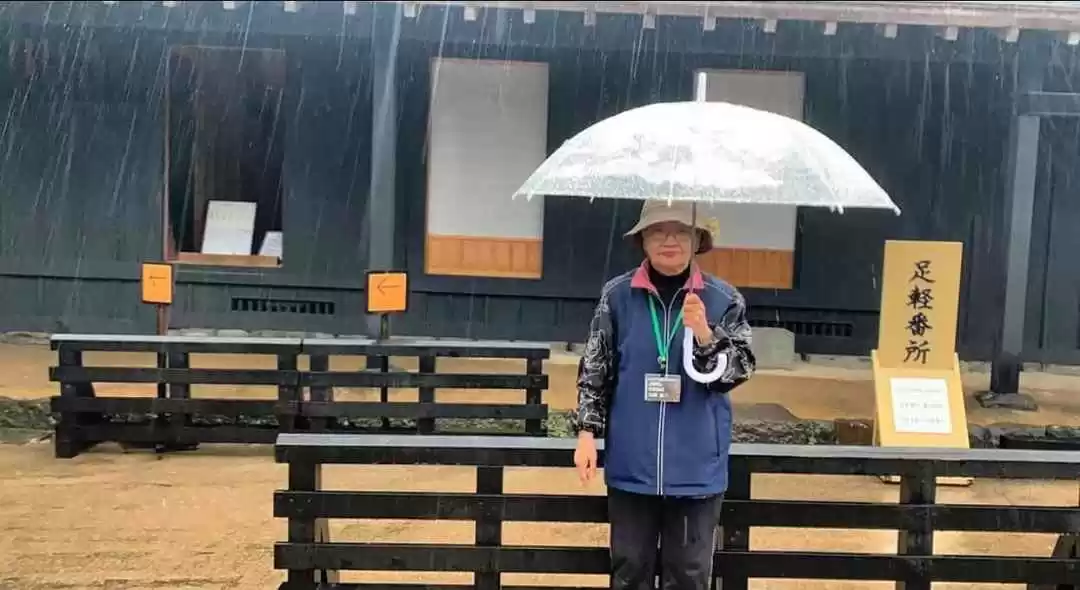














Japan is well known for its prefectures and one of my favorites is Kenrokuen. Each season has a different look. You can also enjoy lots of traditional local foods in the neighborhood around the garden. At Historic villages the interested visitors can even stay overnight in a historic guesthouse in the Toga area, but if you're just visiting for the day, be sure to stop inside the Murakami House to enjoy a cup of hot tea around the home's open hearth, while the village chiefs regale you with the village's history. Fukui Dinosaur Museum is a must to watch museum of its kind. A zen meditation session in the gardens at Hoshinoya Kyoto will always be remembered.
Set in the heart of Tokyo, this hotel is close to the Tokyo Stock Exchange and the Bridgestone Museum of Art. Other attractions include Tokyo Imperial Palace. All of Mandarin's accommodations, including 8 five-star restaurants, a luxury spa and a range of guest rooms and suites, take full advantage of the incredible bird's eye view and feature the stunning skyline at every turn. Located in the central district of Nihonbashi, known as the “centre of Japan” since the Edo era, the Mandarin is the ideal base for any and all Tokyo explorations. There is even subway access to the Mitsukoshimae Station (Tokyo Metro Ginza Line and Hanzomon Line) located directly under the hotel.



Japan's Toyama prefecture is an ideal place to discover the simplicity of traditional Japanese culture. The remote mountainous region, located along the West Coast, facing the Sea of Japan, boasts an incredibly diverse range of attractions, from national treasures and the UNESCO World Heritage Site of Gokayama village, to contemporary attractions like the popular Tonami Tulip Fair and exciting winter sports, like alpine skiing.

Ishikawa, located along the Sea of Japan's coast, consists of the narrow Noto Peninsula to the north and a mountainous region to the south. Whether it's a leisurely drive along the rural coastline of Noto or immersing oneself in the rich culture of the ancient castle town (and Ishikawa's largest tourist attraction) of Kanazawa, which features a diverse sampling of Ishikawa's history, from the traditional samurai district to the historical Kenrokuen Gardens, Ishikawa is a beautiful microcosm of Japanese culture. Kenrokuen Garden, or Garden of the Six Sublimities is regarded as one of the "three most beautiful gardens in Japan." Located in the heart of Kanazawa, an ancient castle town, Kenrokuen features an incredible landscape of feudal era designs and trees dating back to the Edo period. Every season brings its own beauty to this unique garden, but the cherry blossoms here are superb.

Shirakawa-go and Gokayama are on the banks of the Shogawa River Valley in the remote mountain region from Gifu to Toyama Prefectures. Declared a UNESCO World Heritage Site, the villages are famous for the homes built in the traditional architectural style named Gassho-zukuri. Gassho-zukuri otherwise known as "prayer hands construction", is usually characterized by thatched roofs resembling two monks hands joined in prayer. The buildings are often three to four stories high and built to withstand the snow and harsh elements that the region experiences in the winter months.

Fukui Prefecture is "the happiest prefecture in Japan," according to a 2011 study conducted by Hosei University in Tokyo, and it's easy to see why so much joy abounds here in this rural, mountainous region facing the Sea of Japan. Among its most famous tourist attractions are Eiheiji Temple, a leading Zen temple, and the Fukui Dinosaur Museum, Japan's best museum of its kind. Founded in 1244, Eiheiji is the head temple of the Soto sect of Zen Buddhism. Visitors can visit the awe-inspiring religious site, nestled in the wooded hills of Fukui (about 15 kilometers from Fukui City) for a morning guided tour with a senior monk, stay overnight (which includes baths, meals and meditation sessions) or even participate in the temple's active monastery training program.

Hoshinoyo Kyoto, nestled among the mountains alongside the Oigawa River on the western outskirts of the millennial city, is the ideal place to experience the authentic culture of a Japanese ryokan, presented with all the luxurious comforts of a modern day resort. Guests take a short chartered private boat from the famed Togetsukyo Bridge, to the exclusive 25-room property, whose traditional architecture and impeccable landscape architecture will make you feel like you're worlds away from downtown Kyoto. Enjoy a breakfast ceremony in your private villa room overlooking the tranquil river below, learn the traditional arts of the tea or incense ceremonies or try a zen meditation session in the gardens.





























